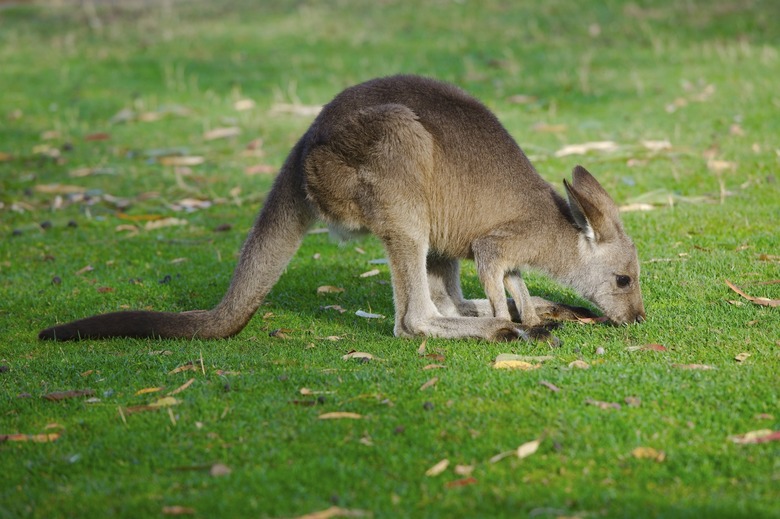Physical Address
Suite 5, 181 High Street,
Willoughby North NSW 2068
Physical Address
Suite 5, 181 High Street,
Willoughby North NSW 2068

A large marsupial native to Australia, the kangaroo fascinates people with its powerful, bounding rear legs, the pouch in which the mother carries its young, and its upright stance and size. Lesser known, but equally unexpected, is the kangaroo’s digestive system, which is uniquely adapted for its herbivore diet of mostly grass and very little water.
Kangaroo teeth endure a lot of wear and tear. Front incisors cut grass and rear molars grind it. A space separates the incisors from the molars, allowing room for the kangaroo’s tongue to manipulate food. As the kangaroo matures, its front molars grow worn and might prove ineffective if not for a special cycling. Rearmost molars sprout through the gums, shoving the other molars forward and forcing the worn molars in front to fall out. In this way, the kangaroo always has sharp teeth up front.
Like cows, kangaroos each have two stomach chambers: the sacciform and the tubiform. The sacklike front chamber contains an abundance of bacteria, fungi and protozoa that begin the fermentation process necessary for kangaroo digestion. Food may remain in this part of the stomach for many hours until fermentation begins. Much like a cow chewing cud, the kangaroo may spit up bits of undigested food to be chewed and then swallowed again. As food ferments, it passes into the kangaroo’s second stomach chamber, where acids and enzymes finish digestion.
Uniquely suited to frequent dry spells, the kangaroo can go weeks, and even months, without drinking water. It gains sufficient moisture through the food it eats. In fact, its slow system of digestion aids in water conservation, as the animal drains every possible bit of moisture from its food before disposing of waste. The kangaroo also conserves water and stays cool by resting during the heat of the day and emerging in search of food, mainly in the cooler evenings and nights.
Although it consumes a diet similar to the cow’s and shares digestive similarities, such as two stomach chambers and cud-chewing, the kangaroo differs from the cow in that it produces almost no methane during digestion. As the kangaroo’s food ferments in its stomach, hydrogen is produced as a byproduct. Bacteria turn this hydrogen, not into methane, but into acetate, which the kangaroo then uses as energy. Scientists have considered introducing these bacteria to cow digestive systems in order to reduce emissions of methane — a greenhouse gas harmful to the ozone layer.